Markets set off a boom in agricultural and sideline products as environmentally friendly packaging materials
At present, research on the replacement of existing packaging plastics with "biodegradable resins" is in full swing. Corn is a delicious and nutritious food, it is also widely used in the manufacture of sweeteners and animal feed. With the advancement of technology, scientists have found that the use of corn can also produce a variety of plastic products, such as the recent "Japanese corn starch resin" is a new type of green environmental protection materials. This kind of resin is made of corn as raw material, processed and plasticized, and it can be used to make a variety of disposable articles, such as cups, plastic bags, and commodity packaging. According to experiments, this packaging material can be disposed of by burning, biochemical decomposition, and insect feeding, thus eliminating the "white pollution" hazard. Today, many large companies abroad are optimistic about this new environmentally friendly material. For example, Coca Cola used 500,000 disposable cups at the Winter Olympics in Salt Lake City, all of which were made of corn and plastic. The cups disappeared in open air in just 40 days. The famous Japanese electrical manufacturer, Sony Corporation, has been packaging MD discs with plastic paper made from corn for two years. The new packaging is as beautiful as the packaging of the past.
So, how did corn become a plastic product? Visit the corn plastics factory of Cargill Road Co., Nebraska, USA and you will see the whole process of turning corn into plastic. First of all, the sugar in the corn is extracted, and the carbon, a base material for the production of plastics and fibers, is extracted through fermentation and distillation, and processed into tiny particles of a small diameter of 4.57 mm called polylactide (PLA). Finally, These small particles are pressed into bags, foam or cutlery.
According to Cargill Dow, corn, one of the major agricultural products in the United States, has ample supply and it will not be a problem to extract 1 billion pounds (454 million tons) of polylactide each year over the next decade. This means that one-tenth of the U.S. corn production will be made into plastics and fibers.
According to recent information released by Taiwan in China, at present, the number of plastic bags produced in Taiwan per ton of corn resin is almost the same as that produced by plastic pellets. According to statistics from the plastics industry in Taiwan, about 100 million tons of plastic products are produced every year in the world, and 30 million tons of disposable packaging materials are used. Solving the pollution caused by these materials takes a lot of social costs. If corn resin can successfully replace some of the packaging materials, Plastics are estimated to have a worthy $10 billion market each year. Perhaps seeing the bright future of this new material, DuPont, the giant in chemical production, has also joined the ranks of developing corn plastics. The company’s research also received US$19 million in financial support from the US Department of Energy.
Although corn plastic is very environmentally friendly, it also has a significant disadvantage. For example, the price of corn plastic plates produced by North American bio-company is about 5% higher than that of traditional plastic plates, and the price of cups is even higher by 25%. However, the company's president, Frederick Hill, believes that within five years, as the demand for corn plastics increases, the scale of production will expand and costs will drop.
Food science experts from the US Department of Agriculture recently announced that a new environmentally friendly food packaging material is expected to come out. This new type of environmentally friendly packaging material is completely made of crushed strawberries, so it is very environmentally friendly and may replace traditional polyethylene plastic film and become a new material for food packaging. According to Tara Me Hugh, a food expert of the U.S. Department of Agriculture, this newly developed food packaging material is no different from traditional products in terms of performance. Food packaging films made from it can also be Prevent oxygen infiltration, so as to achieve the effect of food preservation. Since the composition of this new material is mainly derived from vegetables and fruits that are not suitable for consumption, it is a naturally decomposable and environmentally friendly material. In testing, packaging films made from this “magic†material not only served to preserve freshness, but also improved the taste of fruits such as bananas and apples. McHugh said that in the near future, not only can strawberries be used as packaging materials, but also vegetables and fruits such as carrots and broccoli can be used as packaging materials. There is no doubt that the successful application of this new packaging material and other similar materials will revolutionize the food packaging industry.
Kargil Dow Polymers, a joint venture between Japan’s Cargill and Dow Chemical, has also succeeded in making packaging materials from natural plants such as corn or wheat. This packaging material is named "Polylactide Natural Product" and can be used to make paper cups, candy wrappers, etc. It has good hand feeling, high elasticity and resistance to fouling.
According to reports, Kargil Polymers first extracted unrefined natural sugar dextrose from natural crops such as corn or wheat, followed by fermentation of dextrose to lactic acid, and then cold-formed lactic acid. For lactide materials, lactide is finally melted to form a long molecular chain of a polymer called polylactide. The use of polylactide polymers with such long molecular chains can not only produce packaging materials, but also have low cost and can be decomposed spontaneously under hot and humid conditions without causing environmental pollution.
In China, the development of new packaging materials has also achieved certain results. For example, Hubei Wuhan Futuo Environmental Packaging Materials Co., Ltd. and Wuhan Jinfeng Environmental Plastics Co., Ltd. have mastered the technology of processing deteriorating grain into earthquake-resistant decompression packaging materials, which not only found a way out for China’s metamorphic grains, but also successfully explored the replacement of packaging materials. the road. In addition, they are also able to process wastes such as bagasse, wheat straw, and waste newspapers into a variety of shock-proof decompression packaging materials such as gold, orange, and light gray. Tests have shown that the performance of this material is not inferior to that of foamed plastic materials. At present, only further research is needed on weight reduction.
Snap Swivel Hooks are used to make a quick, reversible connection on a system of ropes, or to connect a rope or cord to another component, like a Lanyard medallion or barrier post. Snap Hooks Swivel are mostly used for the bag strap, pet leash lanyard, belt and etc.
Swivel Snap Hook is generally made of metal, which is stronger and less likely to break. Shape, color and size can be customized as needed, and if it is to be used with a bag, it can be customized to match the bag Snap Swivel Hook, very convenient.
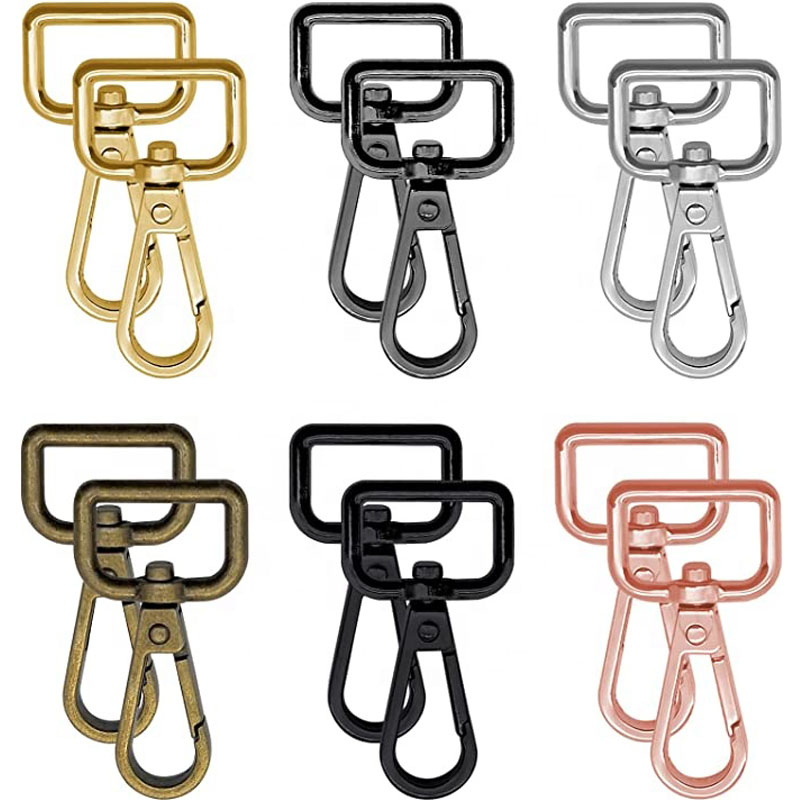
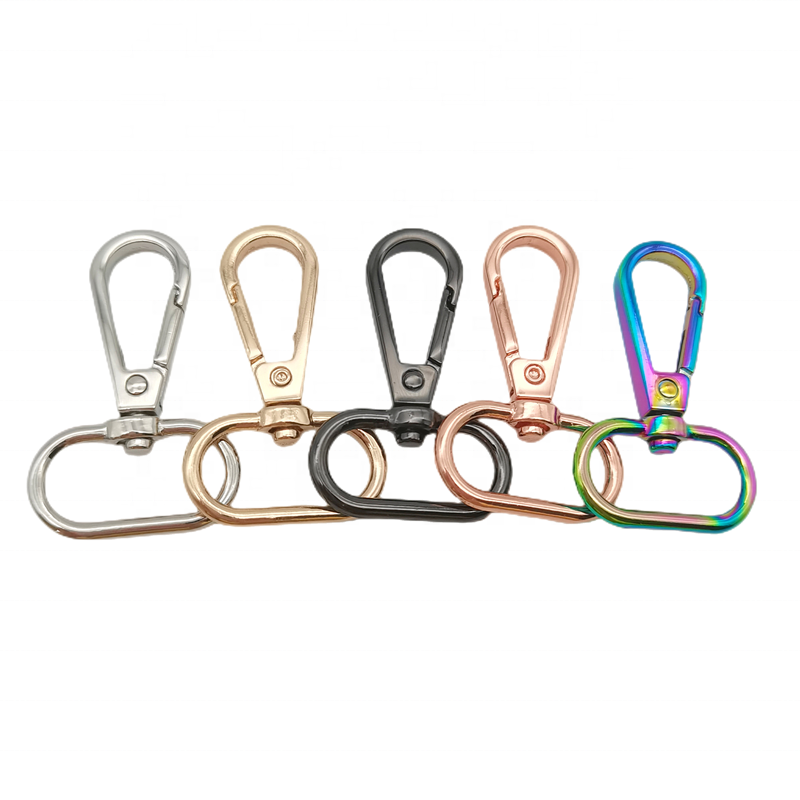
Our Swivel Snap not only has the more common black, silver, gold, rose gold, etc., but also the more special rainbow colors, and even the more special plating color.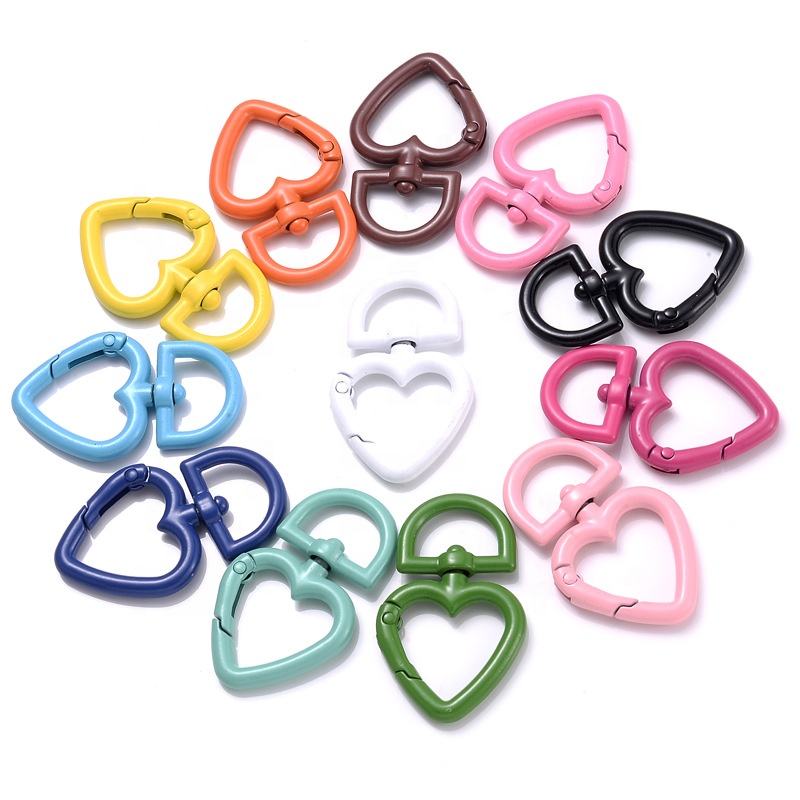
Our Snap Hooks Swivel also come in special shapes, including hearts, stars, moons and dolphins, and these special shapes are especially popular in the European and American markets.
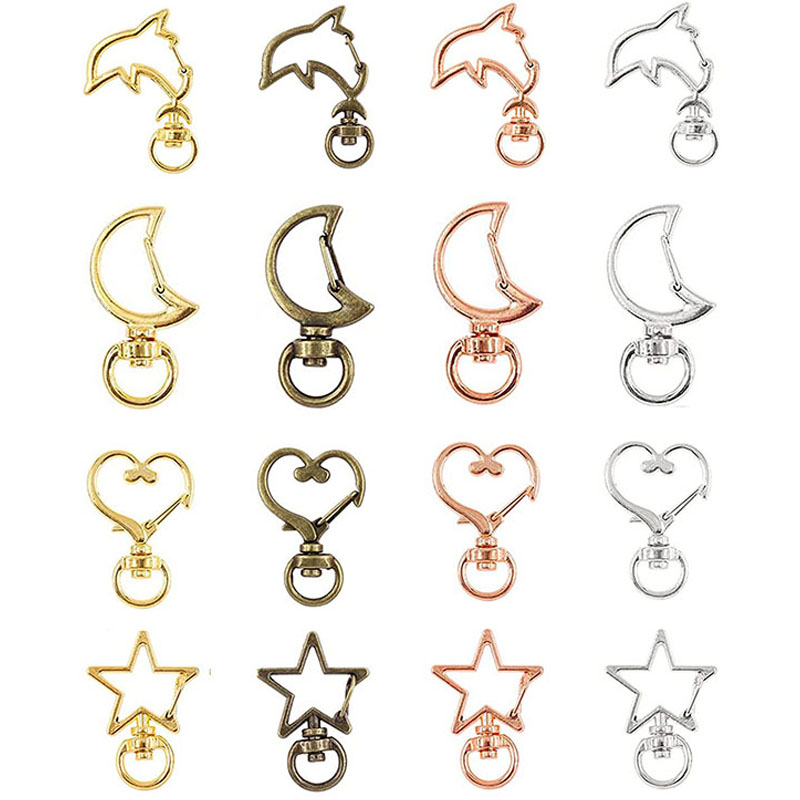
Swivel Snap can also be used with other accessories, such as various Key Ring and various small accessories, which can increase the length and convenience.
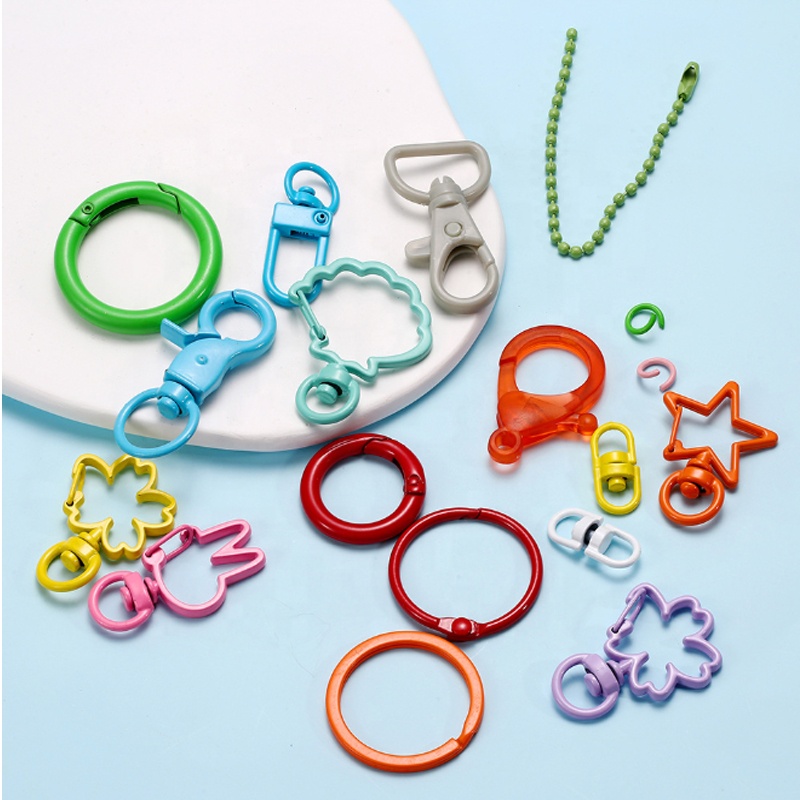
1. What's your best price for this Swivel Snap Hook?
A: the price depends on the logo, size, accessories, and the quantity you need.
2.What's the delivery time?
A:sample order will be delivered at 5-7 workdays,large order is 10-14 days after confirming the details
3.What's your packing?
A:Our usual packing for Lobster Clasp Hook is opp bag, then packed in export carton
4.How about oem?
A: Welcome custom, we can do your logo and design for the printing, usually need to charge for the mold fee for small orders.
5.What about the warranty?
A: We are very confident in our products, each Swivel Clasp Hook was tested ok here,and we pack them very well, so usually you will receive your order in good condition. But to avoid any subsequent trouble regarding quality issue, we
suggest that you check the clear Lobster Clasp Hook once you receive them,and let us know the details if there is any damaged ones, so that we can deal with it accordingly.
6.Does your factory audit?
Yes,our factory is audited by TüV Rheinland .
Snap Swivel Hook,Snap Hook Swivel,Snap Hooks Swivel,Snap Swivel Hooks,Swivel Snap
Shenzhen Yiyixing Zipper Manufacture Co.,Ltd , https://www.yyxchina.com